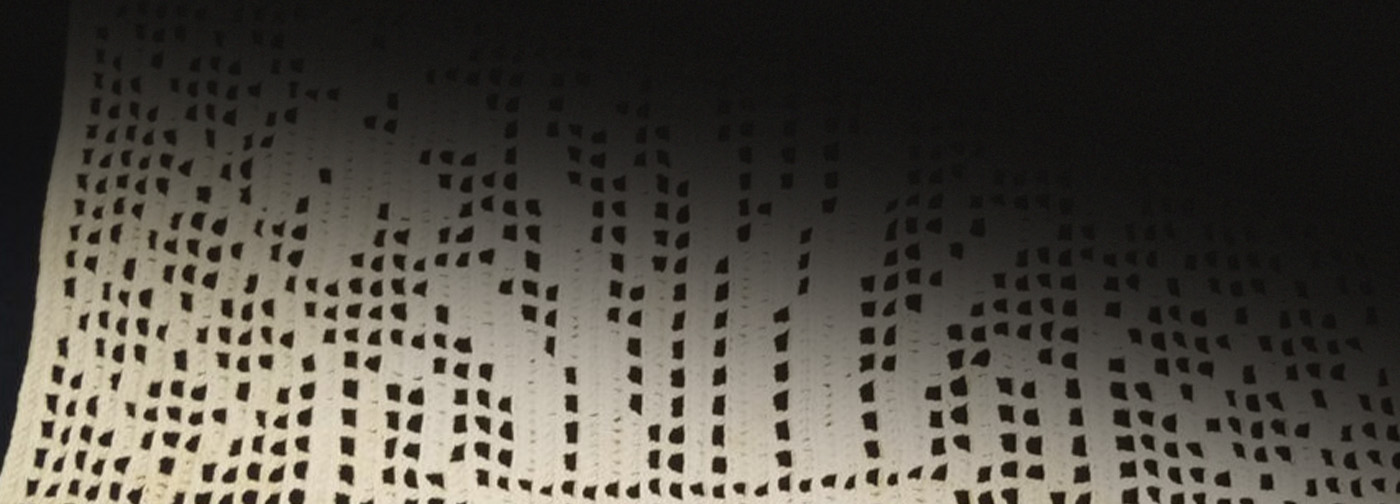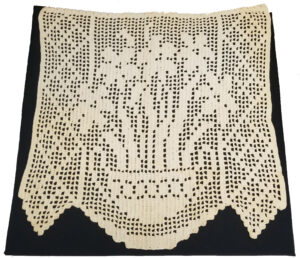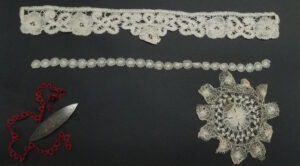Lace and Crochet
The Home Needle
By the late nineteenth century, the growing popularity of the sewing machine revolutionized the methods of producing clothing, textiles, and other consumer goods, especially influencing the lace market. Hand-made variations, consisting of either bobbin or needle lace, were traditionally considered luxury goods and came from regions in England, France, and Belgium. For the American housewife, an acceptable alternative was embroidered net imitation lace, which utilized a machine-made net ground as a surface area for appliquéd or embroidered motifs.
Another fashionable form of fancy work was crochet, an enduring practice used in garments, accessories, and household linens. Crochet consists of a limited repertoire of stitches that can be adapted for a range of patterns. Similar to crochet, tatting was another significant craft of the period that uses a shuttle with pointed ends to create a pattern of knots and buttonhole stitches with thread. It is commonly found in lace edgings, doilies, and collars.
See the sub menu above for the other different areas of expertise that make up our exhibit, The Home Needle.



